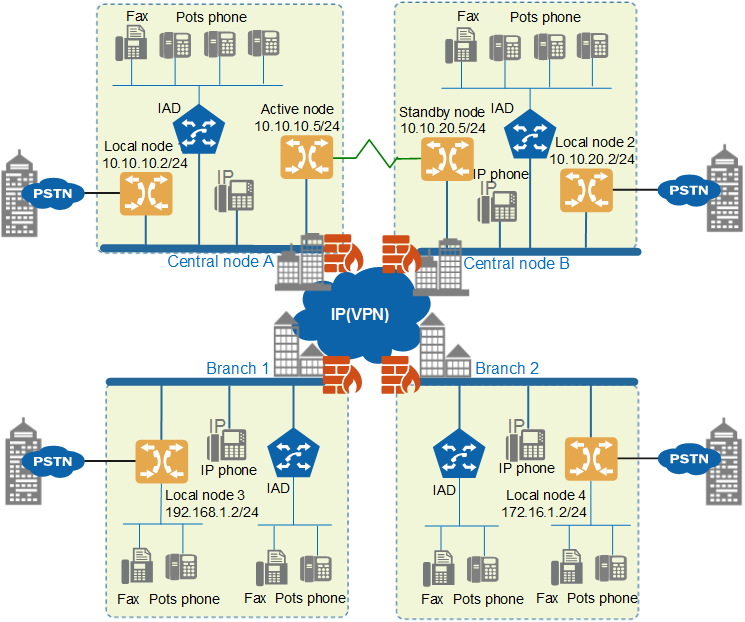Navigation: Configuration > Configuration Examples in Typical Scenarios > Configuring Dual-Center Remote Disaster Recovery >
This topic describes the dual-center remote disaster recovery network in a multi-node centralized call management network scenario.
Figure 1 shows a typical dual-center remote disaster recovery network.
![]()
ϒ⁄In the reliability network of the unified gateway, the single-center two-node active and standby scheme and the dual-center remote disaster recovery scheme cannot be used at the same time.
ϒ⁄Dual-Center remote disaster recovery function is available only after the corresponding license is obtained, you need to apply for it together with the license of the X1900 series unified gateway. Dual-Center remote disaster recovery license is as the same as the Dual Active-Standby license. SBOM code is 88031DSH.
ϒ⁄The active node requires licenses, such as Voice Subscriber Port License, while the standby node requires only the Dual Active-Standby license.
Figure 1 Network scheme

This network is similar to the two-node active and standby network scheme shown in Figure 1 except the following differences:
ϒ⁄The standby node is physically removed from the headquarters to central node B to enable remote disaster recovery.
ϒ⁄The trunk gateway at the central node is replaced with a local node. When faults concurrently occur at active and standby nodes, users at the central node can use the local node to implement local regeneration. User registration and call principles at the central node are the same as those at a local or branch node.
Parent Topic: Configuring Dual-Center Remote Disaster Recovery